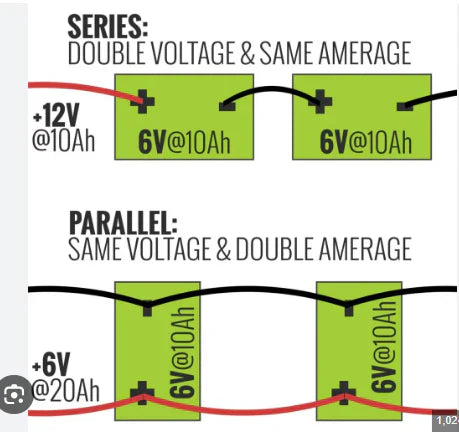Understanding Battery Connections: Series vs. Parallel
Batteries are essential for many devices, from gate kits to home energy storage. This post breaks down the two fundamental ways to connect batteries: series and parallel, explaining how each affects voltage and amperage.
Series Connections:
Imagine connecting the positive terminal of one battery to the negative terminal of the next. This is a series connection. The voltage adds up (e.g., two 12V batteries become 24V), but the amperage (the amount of current the battery can deliver) remains the same. Think of it like increasing the pressure in a water pipe, but the flow rate stays constant. This is why two 12V batteries are used in many 24V gate kits.
Parallel Connections:
In a parallel connection, you connect positive to positive and negative to negative. The voltage stays the same (e.g., two 12V batteries remain 12V), but the amperage doubles. This is like having two water pipes feeding into one, increasing the flow rate but keeping the pressure the same. Jumper cables used to start a car with a dead battery are an example of a parallel connection.
Combining Series and Parallel:
More complex battery systems often use a combination of both. For example, a 48V home battery system might use four 12V batteries in series to achieve the correct voltage, and then multiple sets of these four-battery packs in parallel to increase the overall amperage. This allows for both the desired voltage and a higher storage capacity.
Key Takeaways:
- Series: Voltage increases, amperage stays the same.
- Parallel: Voltage stays the same, amperage increases.
- When combining batteries, they should ideally be the same brand, age, and amp-hour rating for optimal performance and safety.
Understanding these basic principles is crucial for anyone working with battery systems, from simple gate openers to complex home energy setups. Don't get confused – it's all about combining series and parallel connections to achieve the desired voltage and amperage!





Leave a comment
All comments are moderated before being published.
This site is protected by hCaptcha and the hCaptcha Privacy Policy and Terms of Service apply.